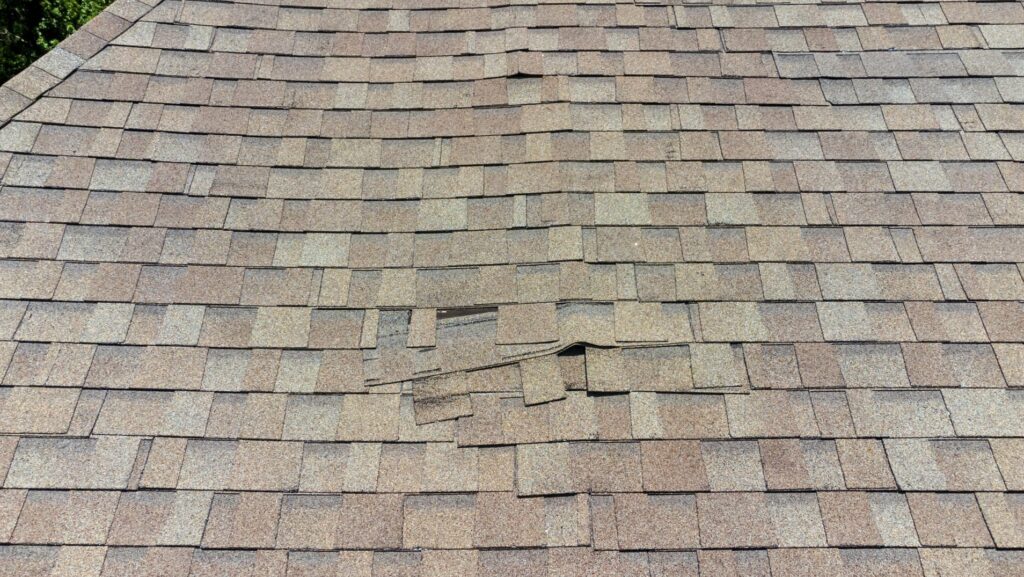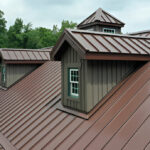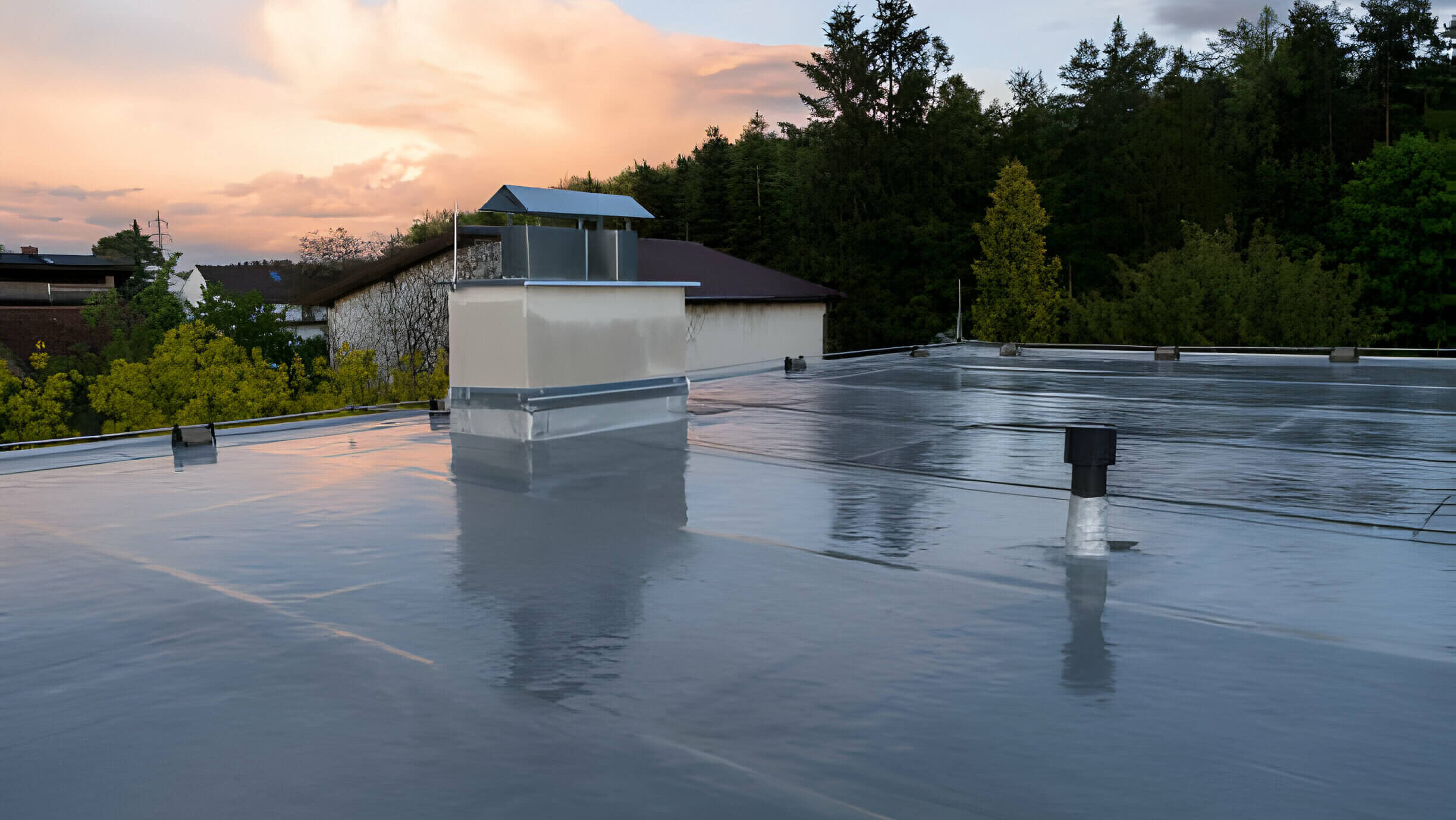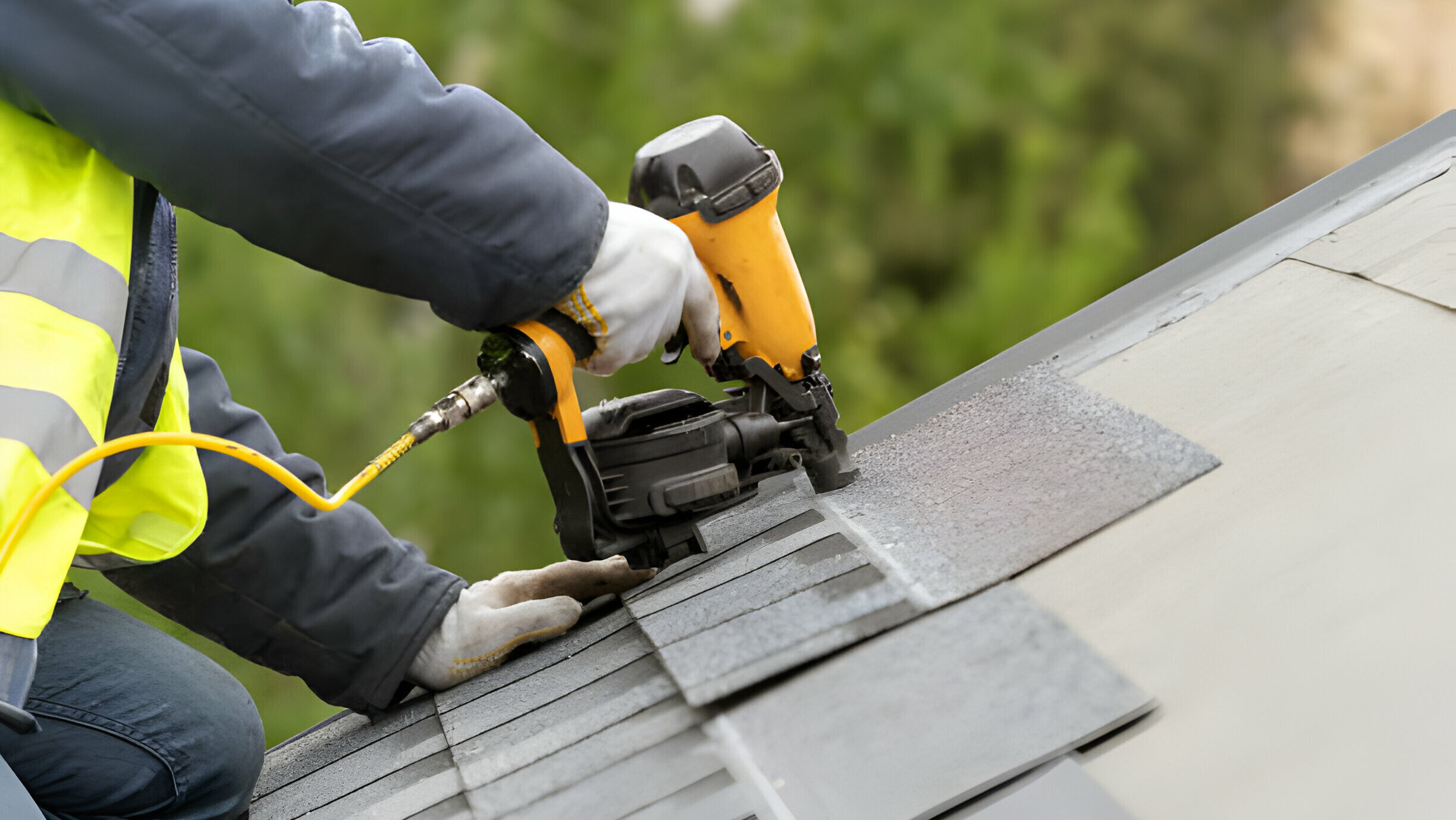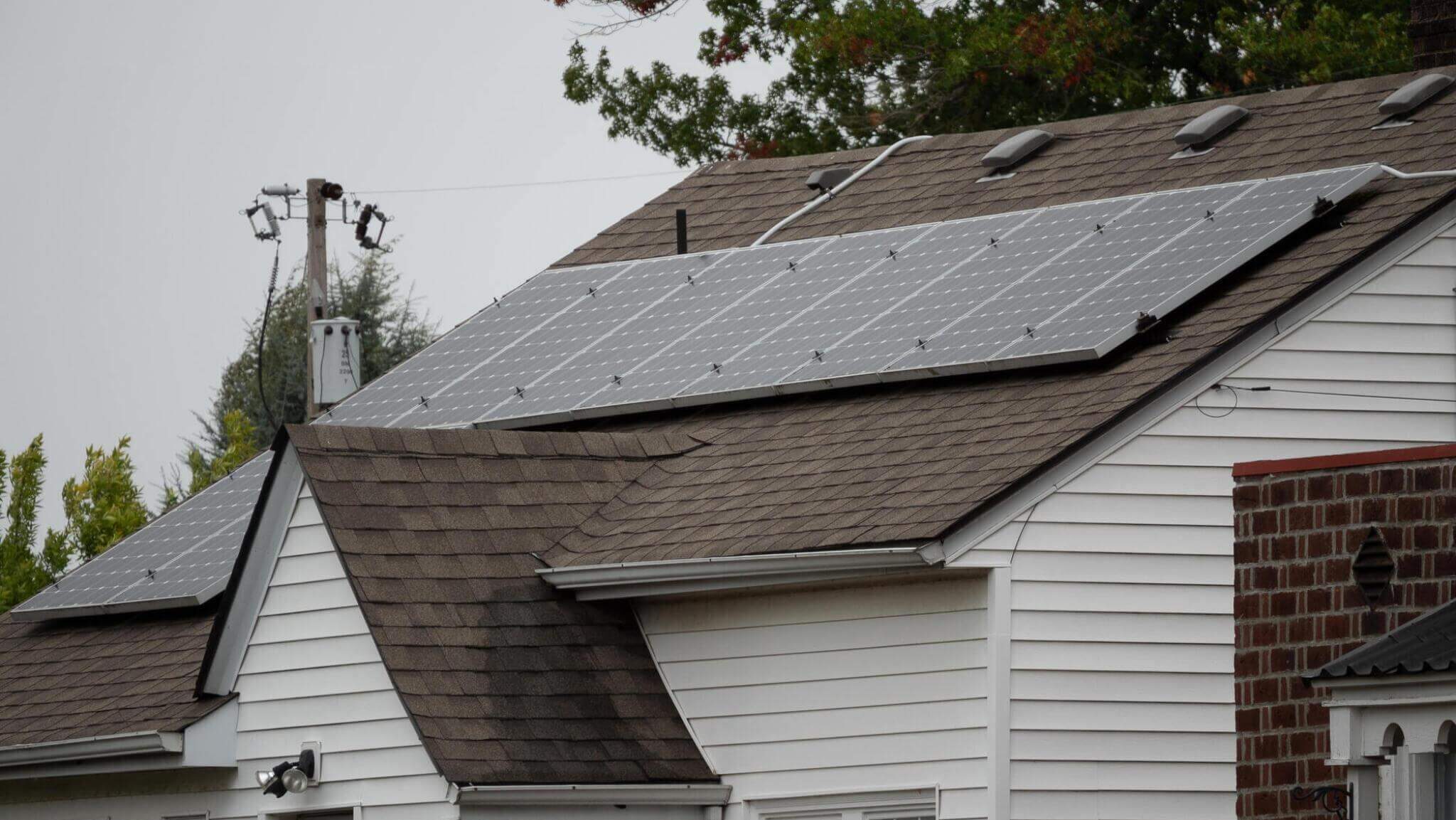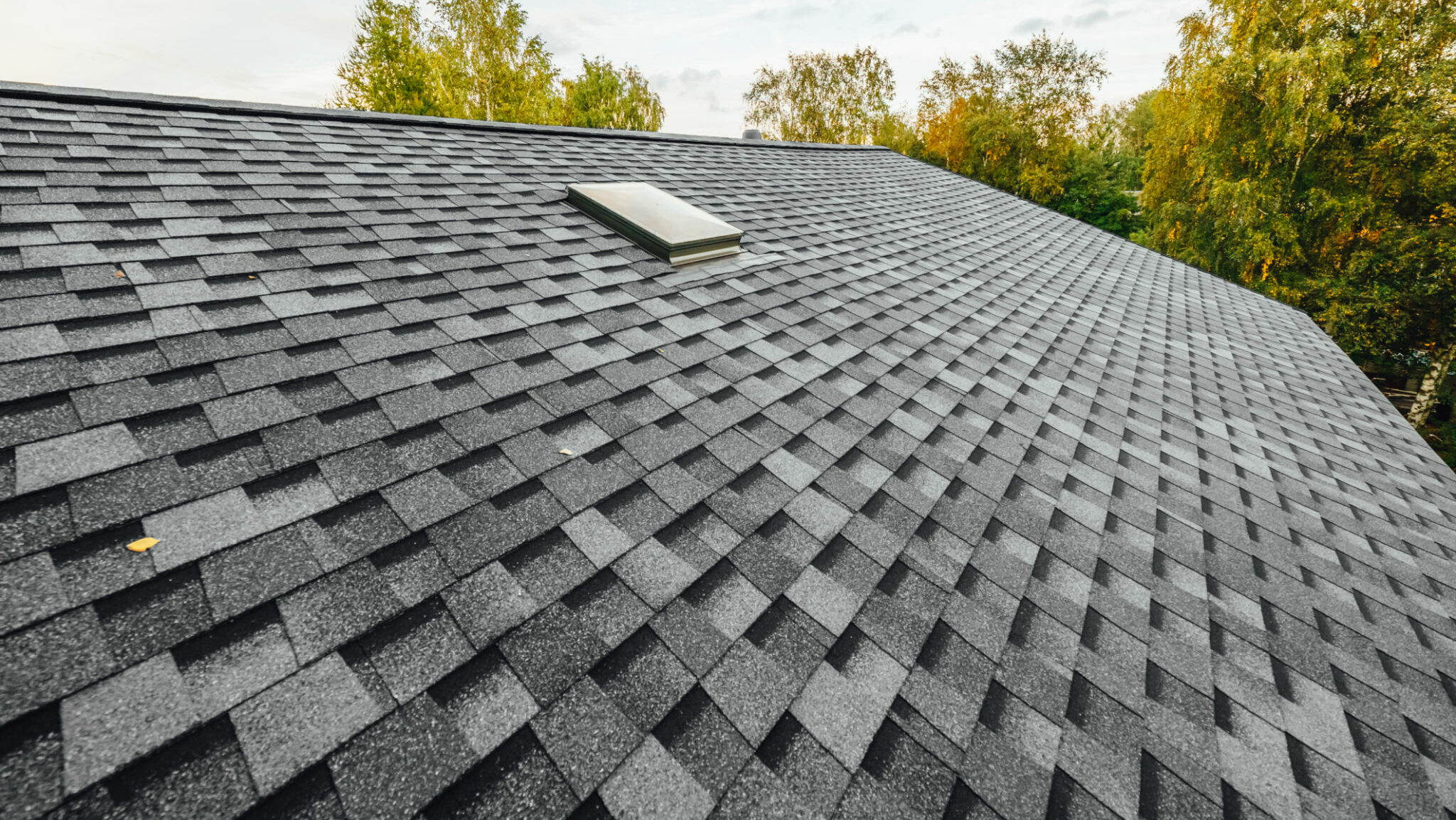The metal plates or shingles you see on your rooftop are only some of what a roofing system consists of. A roof is more than just a protective layer of your house.
Table of Contents
ToggleIt is crucial to understand the components of a complete roofing system because you will need the knowledge whenever you are building a new house or thinking about replacing your roof.
So, what are roofs made of? Tops are made up of different materials depending on your choice and what goes well with your budget. These include asphalt shingles, metal plates, slate tiles, clay tiles, etc.
But that’s only the exterior- a roof consists of an underlayment, insinuating material, a fixed decking, and other components like the gutter system on the inside.
What Materials Do I Need For Roofing?
It would help if you had a variety of materials for a complete roofing system. To better state it, we can say what materials you need for the different components of a roof.
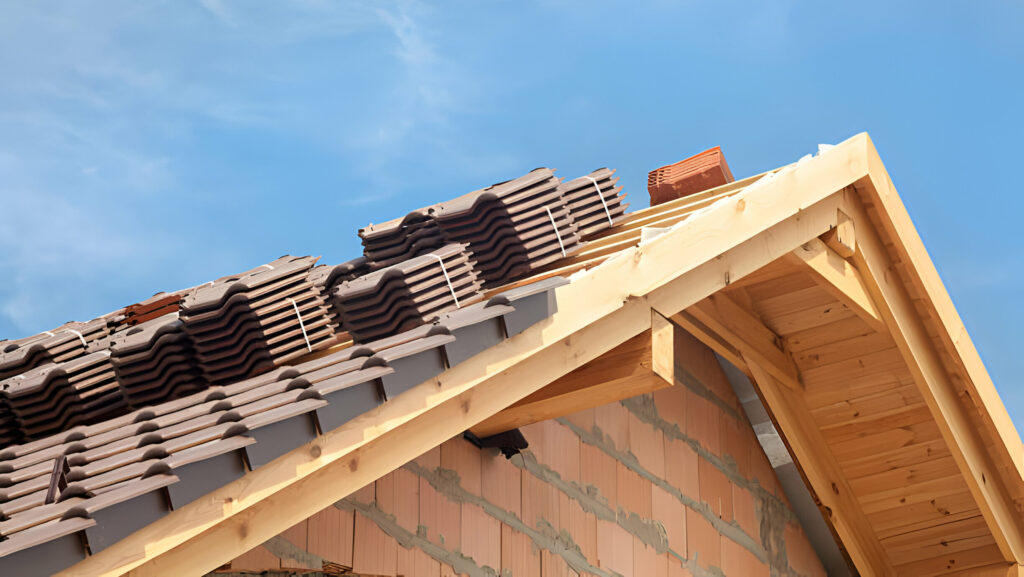
Similarly, you can use tar paper or synthetic underlayment for the roof.
There are different roofing materials that you can choose from for your rooftop. These include,
- Metal plates
- Clay tiles
- Concrete tiles
- Asphalt shingles
- Wooden shingles
- Slate tiles
The most expensive roofing materials are slate and copper. Slate costs about $10-$30 per square foot, and copper costs $9.5-$25 per square foot.
The cheapest roofing material, however, is asphalt shingles, which cost $1.7-$3.5 per square foot.
Some frequently used materials for roof insulation include:
- Foam board insulation
- Fiberglass
- Spray foam
Here is a table showing the materials required for the other components of a roof:
| Drip edges | Aluminum or galvanized steel |
| Flashing | Aluminum sheet, copper, cement flashing etc |
| Downspouts | Aluminum, polyvinyl chloride (PVC), |
| Gutter | Guards, brackets |
Roofing Material Types By Their Application
Following are the different types of roofing materials and their costs;
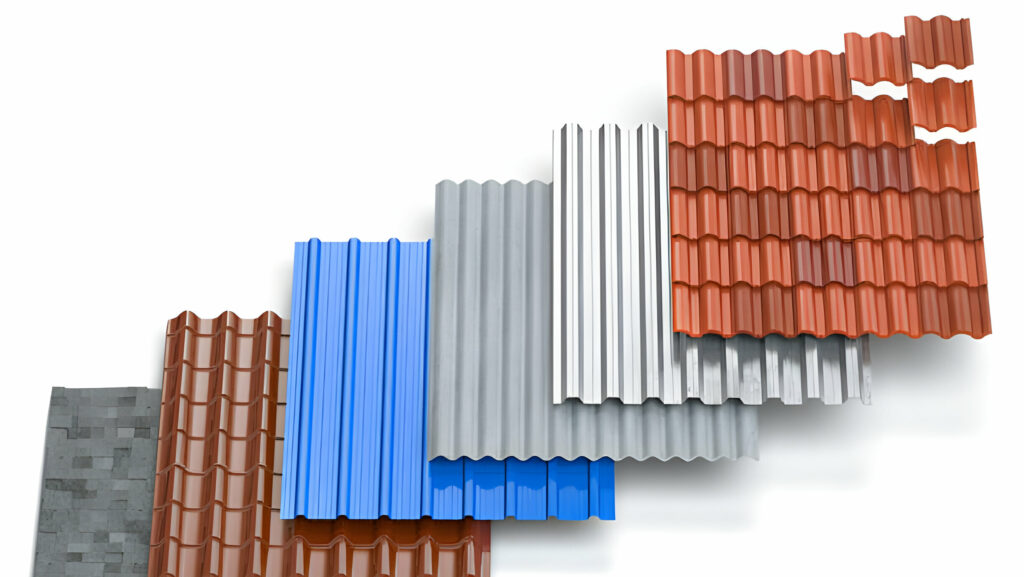
1. Asphalt shingles
Asphalt shingles are the cheapest and one of the most popular roofing materials in North America. They can last from 15-30 years.
They have low maintenance requirements and are resistant to fire. This is why they are so widely chosen. Asphalt shingles are also adaptable to temperature variation and are effective against oil canning.
Cost: $1-$3 per square foot.
What are they made of?
Asphalt shingles roof composition includes an organic mat or a fiberglass that is coated with asphalt or mineral granules.
There are three types of asphalt shingles. Luxury, architectural and 3 tab.
3 tab asphalt shingles have 3 tabs per shingle strip. Apparently they are the cheapest.
Architectural asphalt shingles have a random pattern. They are also called dimensional shingles.
Luxury asphalt shingles are designed to give the look of the elegant slate tiles. They are the most expensive among the asphalt shingles family.
2. Metal Roofing
Metal roofs are known for their effectiveness, durability, and longevity. They have a lifespan of more than 70 years.
Cost: about $5-$17 per square foot. ($500 to $17,000 per roofing square)
There are many types of metal roofs, each in terms of fasteners, exist in either of the two below forms;
Exposed fastener metal roofs have fasteners visible on their outer surfaces, similar to how the Gaf solar roof cost is clearly outlined before installation, while the hidden fastener ones have them concealed below the plates.
Let’s talk about the different styles of metal roofs that are coming in now.
i) Standing Seam Metal Roofing
This type of metal roofing exists as an interconnected system because the fasteners are hidden below.
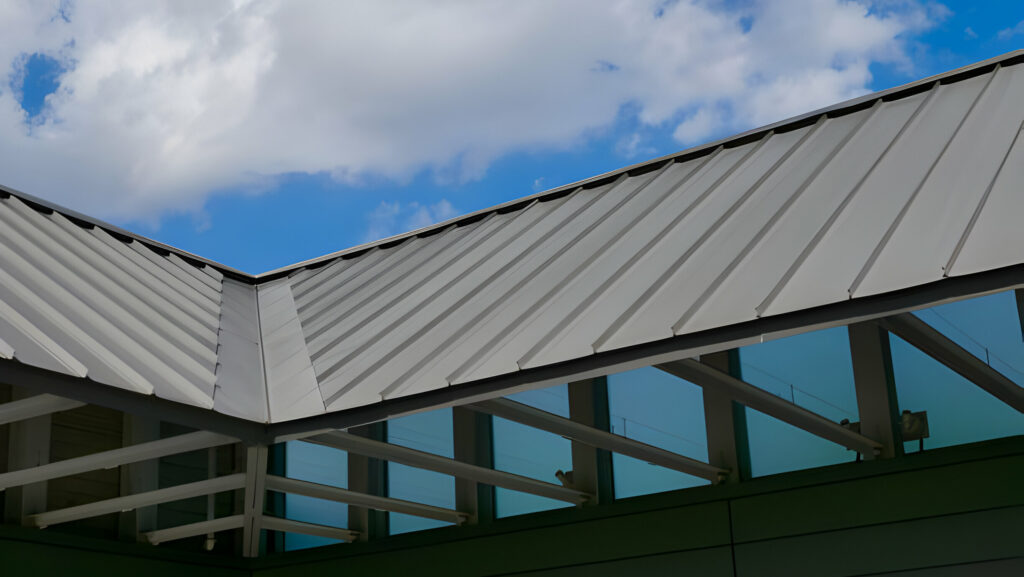
It consists of flat metal plates at the center and raised vertically like seams on both sides.
It gives an elegant look.
ii) Corrugated Metal Roofing
This type consists of wavy or striated metal panels. They have exposed fasteners.
Exposed fastener metal roof vs standing seam metal roof which one is better?
The answer depends on your choice, but I personally prefer the exposed fastener metal roof as it is easier to replace a few panels in it.
iii) Stone-coated metal roofing
This type of roofing is the strongest, consisting of a metal rod in the center surrounded by stone granules. This composition makes it more durable and effective against weather conditions.
Stone-coated metal roofs are very cost-effective.
While metal roofs are advantageous in terms of durability and longevity, they have significant issues. The most notable problems include thermal expansion and contraction, leading to oil canning and weird noises.
Sound can also be produced during rain or hailstorm if the metal roofs are not well insulated or covered.
3. Slate Roofing
Slate roofing comprises thin layers of metamorphic rock shaped to provide a sophisticated appearance.
Slate roofing is renowned for its resilience and longevity. It has a 50–200 year lifespan. In contrast to other roofing materials, slate roofs need routine maintenance.
Cost: $10-$30 per square foot.
Is tile or slate roof better?
It depends on what you think is better. Cheaper price and a variety of colors? Then it’s a tile roof. However, if you are after longevity and effectiveness, go for a slate roof.
4. Tile Roofing
Tile roofing includes clay tiles or concrete tiles. Slate tiles belong to this family, but we usually refer to clay and concrete ones only in this category.
Concrete tiles are an affordable option for people who are low on budget. Clay tiles are expensive compared to concrete ones.
Concrete tiles can last up to 50 years, while clay tiles can last 50-100 years.
All tile roofings are cost-effective during the winters and summers, durable, and easily replaceable.
Slate can be expensive to replace, though.
Cost of concrete per square foot: $3.83-$6.98
Cost of clay roofing per square foot: $9 per square foot.
Wood Shingles And Shakes
While wood shingles captivate with their charming appeal, they might not be your top pick for durability.
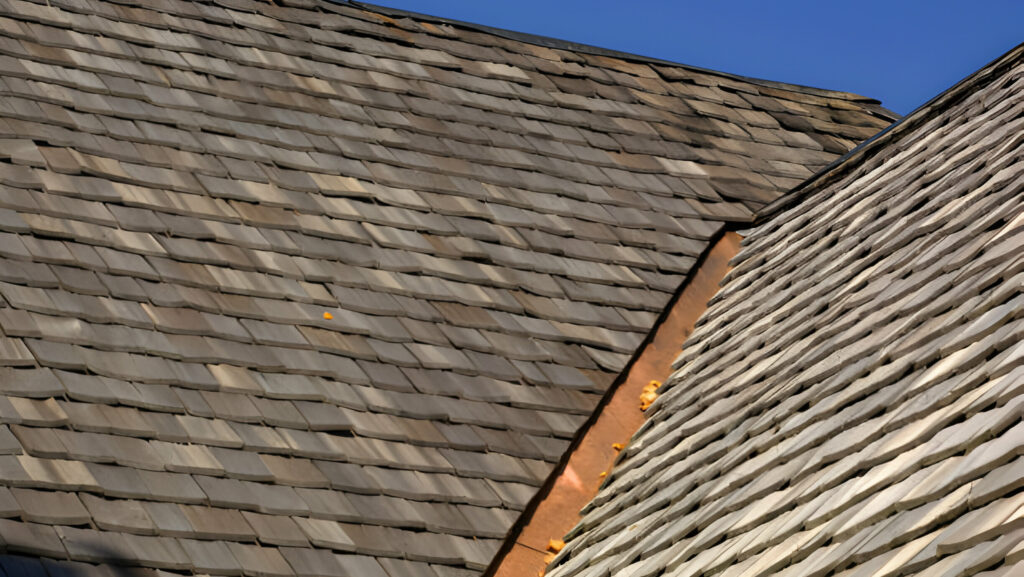
Wood shingles and shakes are made of redwood or cedar and can last only 15 to 30 years.
Cost: $4-$7.25 per square foot.
What’s the difference between wooden shingles and shakes?
The significant difference between the two is that shakes are hand-cut and thicker than wood shingles, which are machine-cut with a uniform look. Shakes give an irregular, non-uniform, and more natural “wood-looking” appearance.
Steep Slope Roofing Materials
A steep slope roof has an inclination or a pitch of at least 18 degrees. Or the pitch is 3:12, meaning that the top is three vertical units for every 12 horizontal units.
There are many roofing materials used for steep-slope roofs..
Here is a list
- Metal
- Asphalt shingles
- Clay tiles
- Concrete tiles
- Slate tiles
- Fiber cement shingles
- Wood shakes and shingles
Low-Slope Roofing Materials And Their Costs
A low-slope roof has a relatively low pitch. For every 12 horizontal units out, your roof is less than two vertical units up.
So, we know that the typical roofing materials used for steep slope roofs can not be used for low slope roofs. But there are better alternatives, trust me.
The best flat roof material is EPDM rubber.
Let’s begin.
Membrane Roofing
The membrane roofing system is an excellent choice for low-slope roofs due to its great waterproofing ability.
Low-slope roofs tend to have water leave at a slower rate than steep-slope roofs because of how they are designed. This is why membrane roofing is a fair option.
The following are the materials used for membrane roofing:
- Thermoplastic Olefin: TPO membranes are reflective and energy efficient. They keep the rooms cooler below and provide a seamless appearance.
- PolyVinyl Chloride: PVC, like TPO, is also reflective. They are white. They have excellent durability and also give a seamless appearance.
- EPDM: EPDM ( chemical name: ethylene propylene diene monomer) is not reflective due to its black color. It is a synthetic rubber and is installed in large, single-ply sheets.
BUR
A Built-up Roofing system is also adequate for low-slope roofs.
Bitumen and reinforcing fabric are layered in many alternating layers to form BUR. Usually, fiberglass is used for the fabric.
The layers of bitumen and fabric are layered on top of a foundation sheet. A cap sheet is typically the top layer, adding more weather resistance.
These roofs resist fire and are heavy.
Modified Bitumen Roofing System
This roofing system was introduced as an alternative to built-up roofing systems as it is more cost-effective.
It is characterized by energy efficiency, high tensile strength, durability, and waterproofing, which makes it an excellent pick for low-slope roofs.
Some of them are plastic-like, while others are composed of synthetic rubber, making them more elastic and flexible.
Liquid Roofing
Liquid-applied roofing is an excellent way of protecting your low-slope roof from harmful UV rays, rain, or severe weather conditions.
They are paint-like, composed of elastomeric compounds, and applied to other roofing materials.
Here’s a table showing a cost comparison for roofing materials for low-slope roofs:
| Roofing Material | Average Cost |
|---|---|
| Liquid roofing | $900-$1000 |
| Modified Bitumen Roofing | $4,900-$14,600 |
| Membrane Roofing | $8,500-$30,000 |
| BUR | $10,000-$20,000 |
Base And Extra Protection Roofing Materials
Let’s look into the components of a complete roofing system.
Underlayment
Underlayment is a thin layer of material such as rubber or felt between the roofing material and the roof decking.
It protects against rain, hail, or heavy winds.
Ice And Water Shield
This is also an underlayment, typically more water and ice-resistant, installed on certain vulnerable places on the roof.
They are made of modified bitumen.
Flashing
Flashing is a thin sheet of a material (cement, aluminum) fixed on places prone to water leaks.
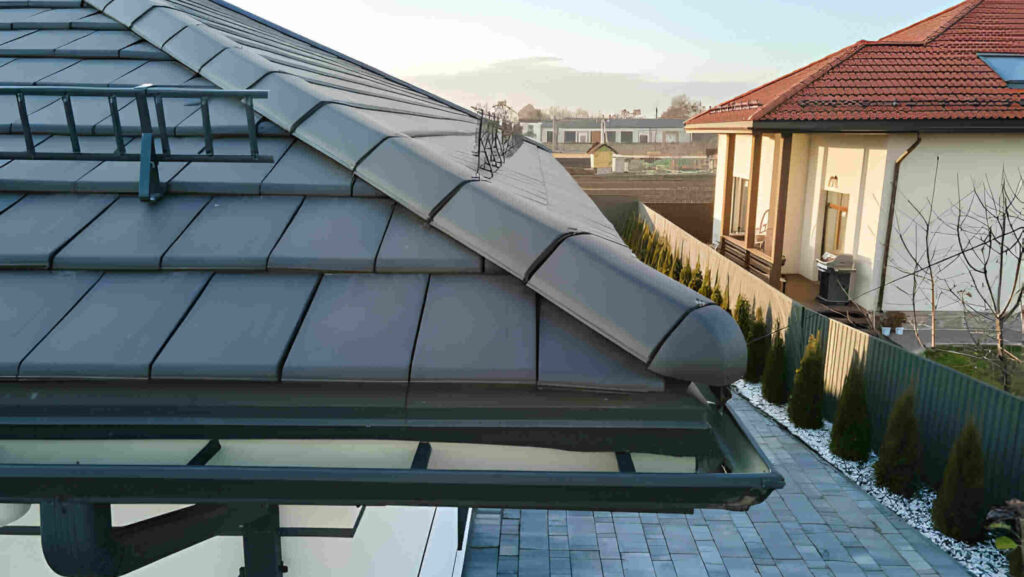
How long flashing lasts depends on the durability of the material used.
Ventilation
A proper ventilation system is essential for a house. It allows your home to breathe.
A ventilation system releases heat into the atmosphere through the vents and attracts fresh air through the attic space of your roof.
Gutters
A roof with gutters is complete. The gutter system removes water from your top towards the drain through the downspouts.
Gutters can be made of various materials, including PVC, Copper, Aluminum, Steel, etc.
Roof Decking
This comes above the insulating material and below the underlayment. It can exist as plywood or OSB.
The lifespan of roof decking can significantly decrease if the weather conditions are harsh and the roofing materials need to be more durable.
Factors To Consider When Buying A Roofing Material
A roof is not something you can change at any time, so choosing a roofing material requires careful consideration.
Factors like durability, cost, weather impact, etc, play a crucial role in determining the value of your investment.
Durability
The durability of a material is simply how long it can last on average. You certainly don’t want to choose something that has a short lifespan.
| Material | Durability |
|---|---|
| Asphalt Shingles | 15-30 years |
| Metal Roofing | More than 70 years |
| Slate Tiles | 50-200 years |
| Concrete Tiles | 50 years |
| Clay Tiles | 50-100 years |
| Wood Shingles or Shakes | 15-30 years |
Cost
It would be best to consider the costs of different roofing materials before deciding, as many materials are inexpensive.
If you want longevity and resistance on a low budget, you can go for a metal roofing system instead of a slate or a copper one.
Weather impact
Weather impact is an essential factor to consider because the severity of weather can directly affect the lifespan and the condition of roofing material.
For instance, if you live in an area prone to hail storms, go for something more resistant, like a stone-coated steel roof.
Roofing Material List FAQs
What goes under roof shingles?
Under the shingles comes underlayment, a thin layer of rubber, felt, or asphalt acting like a double protective layer after the decking.
Can I reuse the material for a roof replacement?
If you want to use the old, damaged shingles again, then why are you replacing your roof in the first place? No. Reusing the same materials for reroofing is not recommended.
Conclusion
This article mentioned different roofing materials, their lifespans, costs, and characteristics. A list of roofing materials for steep and low-slope roofs is also shared.
I hope we were of help.



